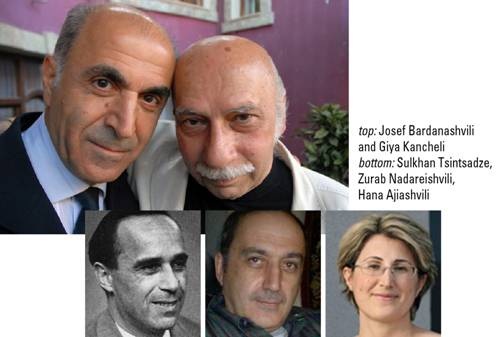Since the death of pianist Earl Wild at 94 in January, he has been widely lamented as the last of the old fashioned Romantic virtuosos. Sadly, this is probably true. There are many younger players who have an interest in the pyrotechnic repertoire Wild favored, as well as a technical mastery on par with his. Marc-Andre Hamelin, Nicolai Lugansky, Arcadi Volodos, Yuja Wang and others are able to perform the feats of digital dexterity for which Wild was known during his career, and a number of today’s best-equipped technicians perform Wild’s own fantastical and finger-twisting transcriptions, yet something is missing. To my ear it is the ineffable elegance – some criticized it as schmaltz – that Wild brought to his playing that may indeed be gone for good. Perhaps it was a product of the times in which he lived.
Earl Wild was born in 1915, midway through the First World War and the last, fading days of gilded ballrooms, long gowns and white ties. Television and even radio, the media which would bring him to prominence, were years away, but as a precociously talented little boy growing up in a middle class home in Pittsburgh, Pennsylvania – his father was an accountant in the steel business – he would have glimpsed the doings of the society class to which his parents aspired. The family never quite made it. Wild’s father left when he was still a child, and the arrival of the Depression in the 1930s was hard on them, but having tasted the finer things early, Wild became a very elegant man. It was that innate elegance that shone through in his playing.
As a boy he was taken to hear the great virtuosos of the day. Hofmann, Rachmaninoff, Godowsky, Lhevinne and many more filled the Syria Mosque concert hall of Wild’s youth with the kind of scintillating, perfectly polished playing he would come to exemplify, and he absorbed it all like a sponge. He began with local teachers, but at age twelve Wild was accepted as a student by Selmar Janson, himself a student of one of Liszt’s prize pupils, Eugen D’Albert, and it was then that Wild’s superbly flexible and secure technique began to be formed. It was revised and extended after he moved to New York in the 1930s by two more blazing virtuosos, the speed demon Simon Barere, who is today mostly remembered for his dramatic death (on-stage at Carnegie Hall, moments into a performance of the Grieg Concerto in 1951), and Egon Petri, another fabulous technician and Liszt specialist who must have nurtured an affinity for the same repertoire in his student.
New York was the land of opportunity for a good looking home grown American pianist of Wild’s caliber, and in 1937 opportunity knocked bearing an invitation to join the NBC Symphony under Arturo Toscanini. It was a dream gig for the 21-year-old, and he refined his performing chops playing nationally broadcast weekly radio concerts. Wild played the first televised piano recital in 1939 and remembered ever after being nearly broiled by an over-zealous lighting man. Another TV appearance a couple of years later, this time as soloist with Toscanini in Rhapsody in Blue, brought him national fame. After Pearl Harbor, he enlisted playing the flute – one of several other instruments he learned to play as a youngster – in the Navy Band. When his superiors figured out who he was, he spent the remainder of the war traveling with Eleanor Roosevelt playing the Star Spangled Banner to open her speeches.
Discharged from the service after the war, he went back to broadcasting, switching networks to become staff pianist at ABC where he was able to exercise his talents as a conductor and composer as well. Veering from the sublime to the ridiculous as his duties required didn’t bother him, but it left an imprint on his reputation that followed him into his post-television career. Speaking about the opera parodies and other fluff he wrote for Sid Caesar’s variety show in the 1950s, he told The New York Times’ Anthony Tommasini that the work was necessary – he had a dependent mother to support. He remained with the network until 1968 when he left to concentrate exclusively on his concert career, but some snobbery from his more purist-minded colleagues lingered. In the late 1970’s when he was given an appointment at The Juilliard School, one faculty wag was overheard to say: “God, they’ll hire Liberace next.”
Composing and arranging had always interested him, and beginning in 1973 he began to write an extraordinary string of highly personal transcriptions for piano – initially for his own use and later published – among them the Grand Fantasy on Themes from Porgy and Bess, arrangements of 14 songs by Rachmaninoff, and Seven Virtuoso Études on Popular Songs also taken from the Gershwin catalog. His original works go all the way back to 1928 and include an oratorio Revelations commissioned by ABC in 1962 as well as music for a number of stage plays. A sonata written in 2000 shows him still, at 84, a man of broad tastes and a consumer of popular culture. The last movement is entitled Toccata a la Ricky Martin.
Wild was a big, tall and gregarious man of great good humor, and a font of marvelous stories. He could also be outspoken, and in the days when any hint of scandal could bring a career crashing down, he was never particularly careful about keeping his homosexuality a secret. In 1972, he began a relationship with Michael Rolland Davis, and they lived together openly as a couple, first in New York and then in homes in Columbus, Ohio and Palm Springs.
Mr. Wild served on the faculties of the Juilliard, Eastman and Manhattan Schools. He also taught at Ohio State University and at his alma mater Carnegie Mellon University and was, in a field not known for it, beloved for his gentle and genial way with his students. He was an inveterate giver of master classes, and into his 90s he maintained an international travel and concert schedule that would have prostrated many a younger man.
As a youngster growing up in Boston, I first heard Mr. Wild in the Tchaikovsky Concerto with Arthur Fiedler and The Boston Pops and was so overpowered by the performance and the piece that I began learning it myself. I didn’t hear him again until the early 1980s, this time at Carnegie Hall, in a dazzling program of piano transcriptions in which cascades of notes seemed to rise from the piano like a fountain of shimmering pearls and bounce across the stage into our laps. Immersed as I was at the time in the Viennese classics, that concert felt like a guilty pleasure, but a pleasure it was, and I was filled with admiration for Wild’s ease and fluid command. I heard him several more times in later years, and well into his old age his playing retained an astonishing degree of polish and perfection and always with that bit of romantic schlag missing from most modern performances. Fortunately, Mr. Wild was a wildly prolific recording artist, and a large chunk of his vast repertoire is represented on nearly 80 compact discs available from Ivory Classics [http://www.ivoryclassics.com], the company he started with his partner Michael Davis. Among the many, many gems not to be missed: Eugen D’Albert: Scherzo in F-sharp Major, Strauss/Tausig: Man lebt nur einmal, Anton Rubinstein: Staccato Etude, Tchaikovsky/Pabst Paraphrase on Themes from Sleeping Beauty, and Wild’s own fabulous transcriptions including the 7 Gershwin Etudes and an irresistibly delicious elaboration of the Pas de Quatre from Swan Lake. He was really something of a magician. Mr. Davis survives him.

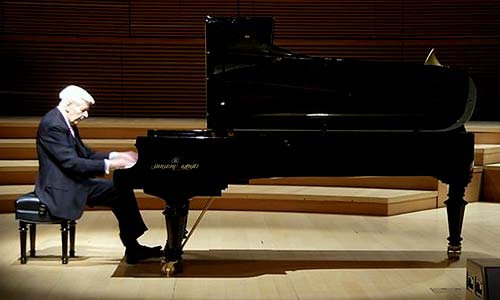
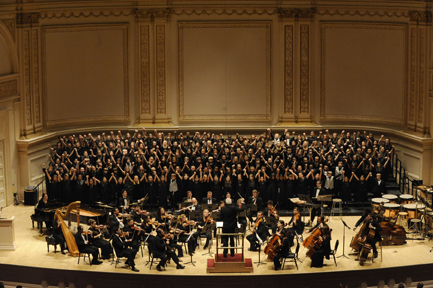
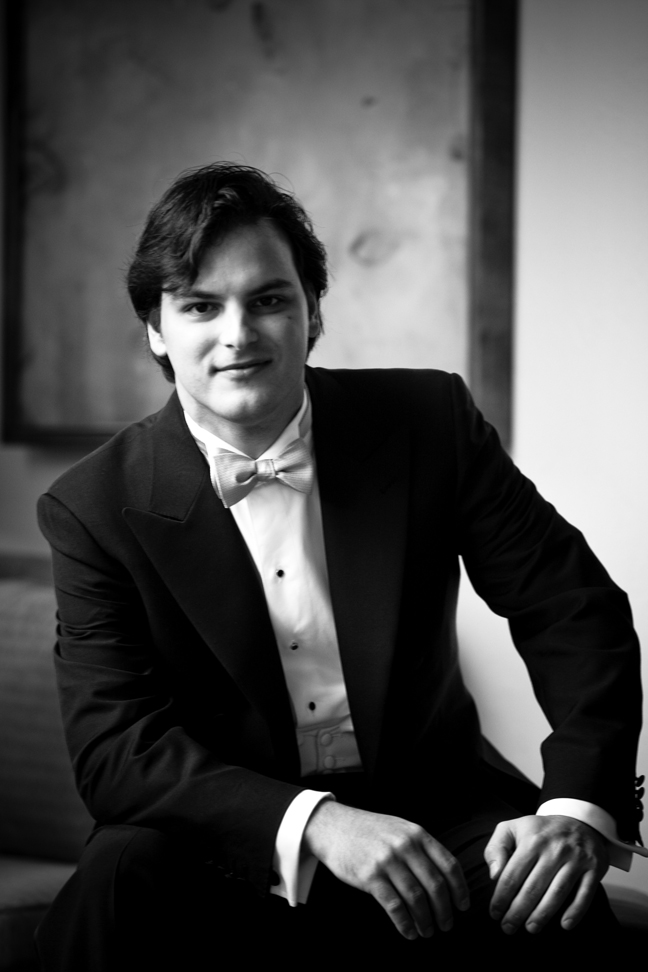
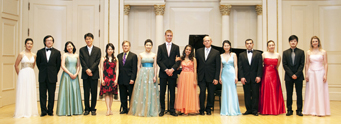
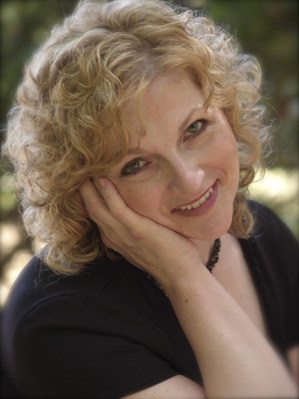
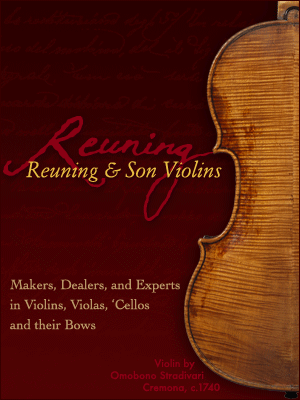
 In a concert sponsored by the Musicians Club of New York, the 2009 first place winner of the prestigious Olga Koussevitzky Young Artists Awards, trumpeter Alexander White, performed at beautiful Steinway Hall in New York City. This was the first time a trumpet player was awarded a prize in the competition’s winds and brass division, where flutists or clarinetists usually get the honor.
In a concert sponsored by the Musicians Club of New York, the 2009 first place winner of the prestigious Olga Koussevitzky Young Artists Awards, trumpeter Alexander White, performed at beautiful Steinway Hall in New York City. This was the first time a trumpet player was awarded a prize in the competition’s winds and brass division, where flutists or clarinetists usually get the honor.